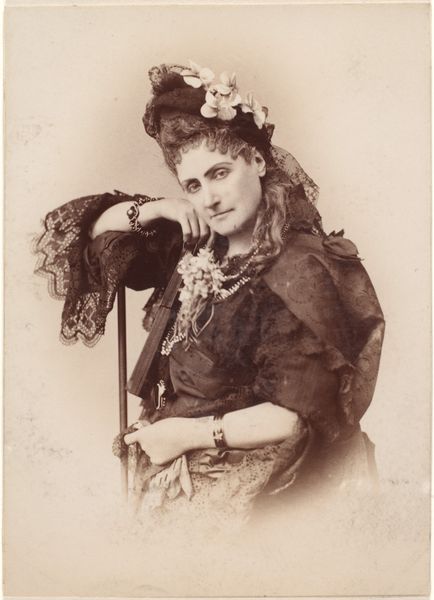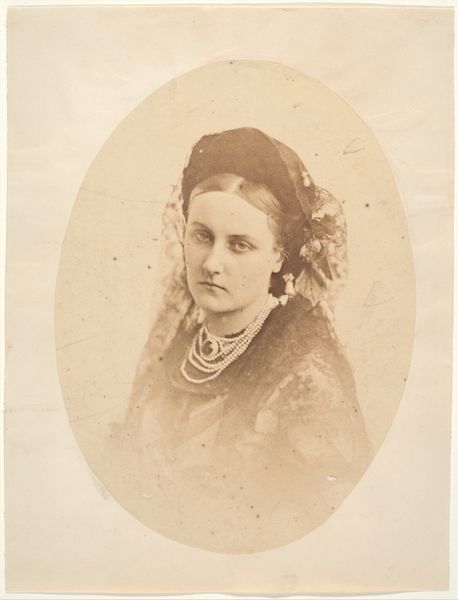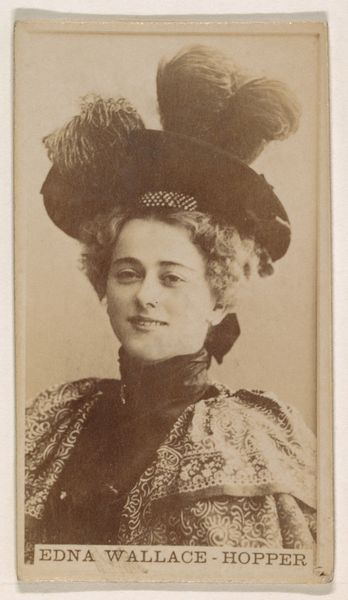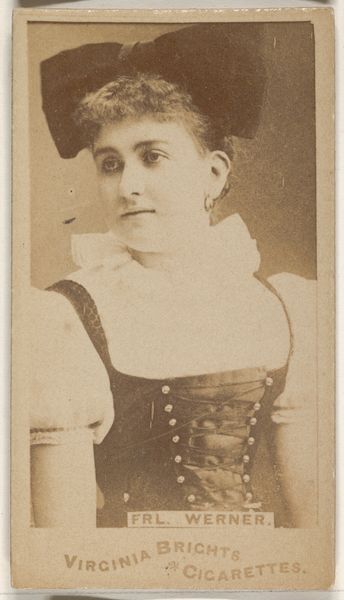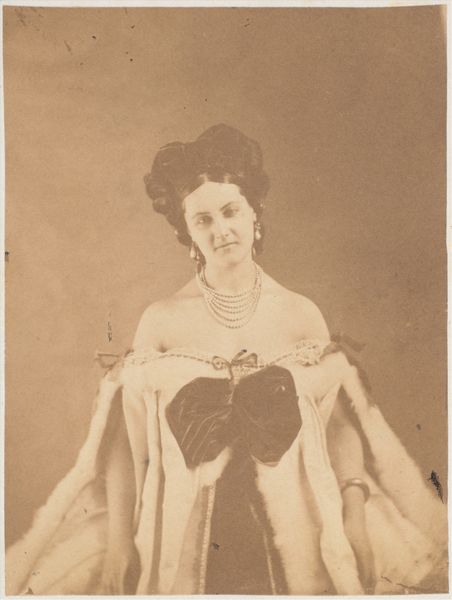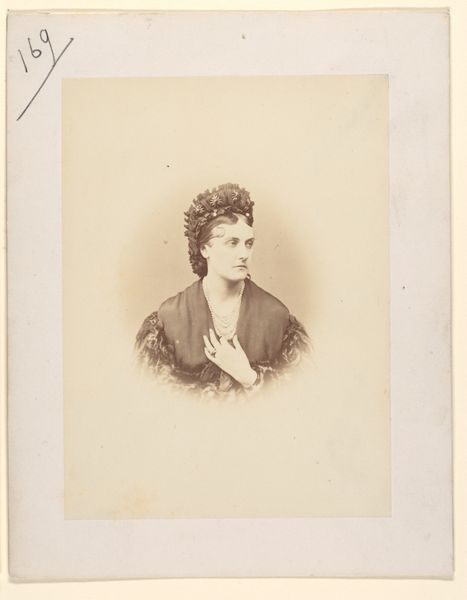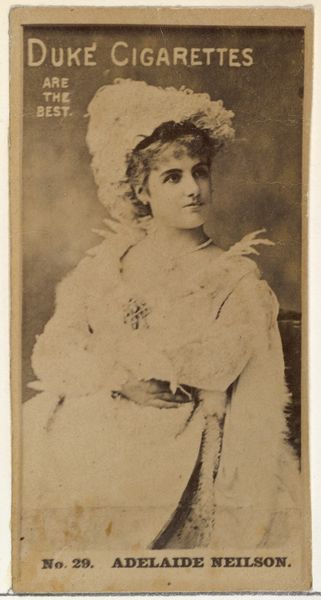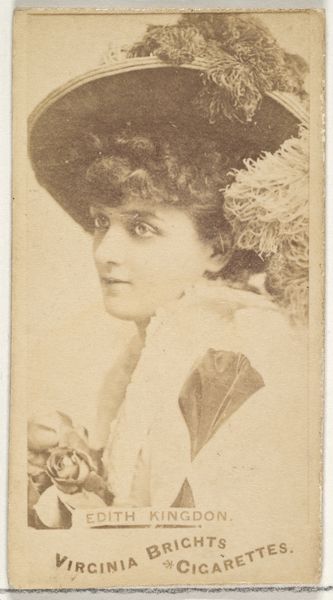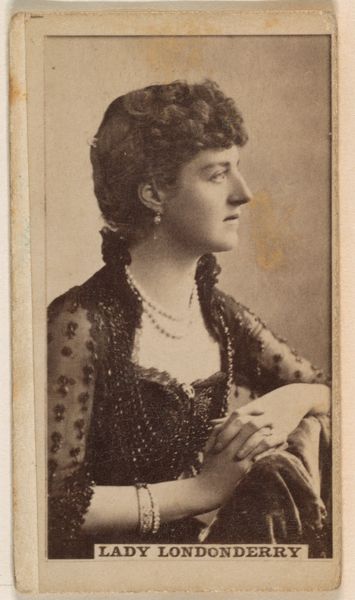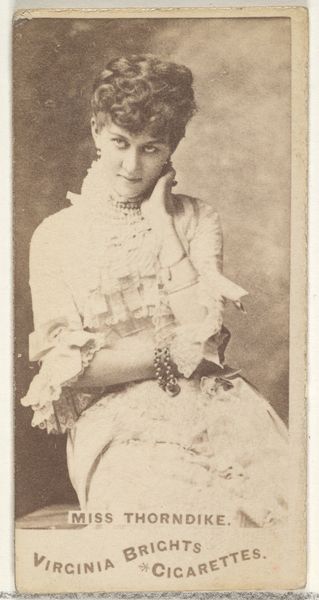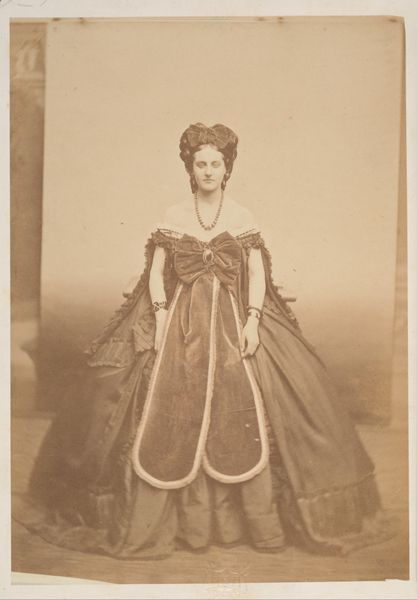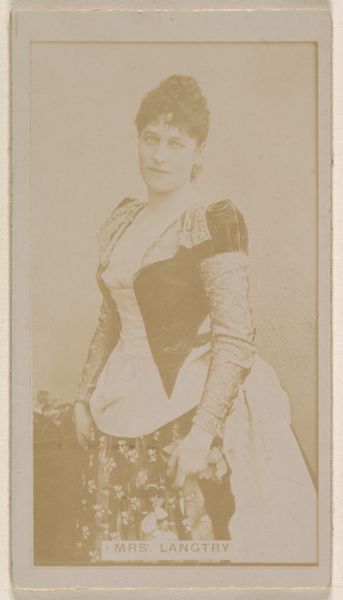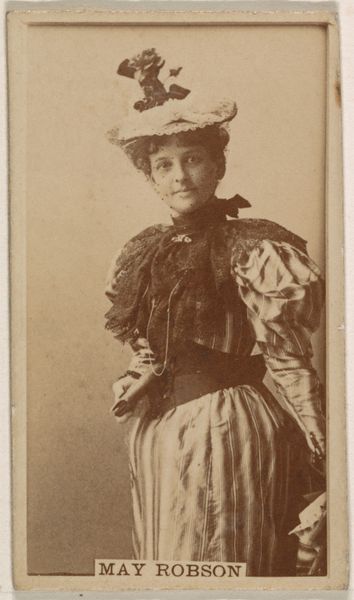![[La Comtesse décolletée; Roses mousseuses] by Pierre-Louis Pierson](/_next/image?url=https%3A%2F%2Fd2w8kbdekdi1gv.cloudfront.net%2FeyJidWNrZXQiOiAiYXJ0ZXJhLWltYWdlcy1idWNrZXQiLCAia2V5IjogImFydHdvcmtzLzcxNGEzZWZhLTA3YzQtNDViYS1iYzM1LTY3YjJkMzBhNzUyNi83MTRhM2VmYS0wN2M0LTQ1YmEtYmMzNS02N2IyZDMwYTc1MjZfZnVsbC5qcGciLCAiZWRpdHMiOiB7InJlc2l6ZSI6IHsid2lkdGgiOiAxOTIwLCAiaGVpZ2h0IjogMTkyMCwgImZpdCI6ICJpbnNpZGUifX19&w=3840&q=75)
[La Comtesse décolletée; Roses mousseuses] 1861 - 1867
0:00
0:00
Dimensions: 44.8 x 29.2 cm (17 5/8 x 11 1/2 in.)
Copyright: Public Domain
Curator: Looking at this print, I'm immediately drawn to the direct gaze. It's very self-assured, isn't it? Almost confrontational. Editor: Indeed. We're observing a photographic portrait entitled "La Comtesse décolletée; Roses mousseuses" crafted between 1861 and 1867 by Pierre-Louis Pierson. As an albumen print, it stands as a product of its time. I notice the use of soft focus which gives her face an almost dreamy aura. Curator: That dreamy quality, in my opinion, clashes beautifully with the almost severe set of her jawline and the bold dark ribbon adorning her coiffure. In that era, photographic portraiture gained ground among the upper class as markers of social standing and romantic sensibility. To whom and how did people wish to project themselves at the time, and for whom was it intended? It has the stamp of imperial taste. Editor: Undoubtedly, such visual elements contribute meaning. The rose, or roses mousseuses from the artwork's title, suggests ideas such as the layers of beauty and ephemeral qualities associated with women. In general, flowers have served as symbols for the feminine ideals and have carried an intrinsic connection with love, virtue, and physical attractiveness. The subject's jewelry – her necklace, earrings – certainly point towards her status, as well. Curator: We see it very explicitly displayed, yes. Pierson gained considerable notability largely for becoming a key figure, the favored portraitist, of the Countess of Castiglione, Virginia Oldoini. The Comtesse became something of a spectacle and, like royalty or celebrities today, a constant target of scrutiny. It seems that their dynamic grew incredibly collaborative as they embraced photographic manipulation. It feels very different to what most photographers were exploring in the mid 19th century, very focused on self promotion and the politics of visibility. Editor: Precisely. She assumes an identity, becomes an allegory, something elevated above herself. I think these symbols allow one to see her not just as one specific woman but an archetype, perhaps even embodying feminine power. Curator: Viewing this photograph now, with our 21st-century eyes, gives us opportunity to scrutinize societal expectations, celebrity and artistic vision. Editor: It encourages an interesting tension of the familiar, through portraiture, but one presented via these intentional choices that still offer fresh insights today.
Comments
No comments
Be the first to comment and join the conversation on the ultimate creative platform.
